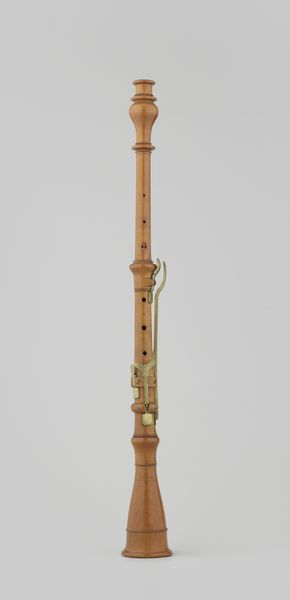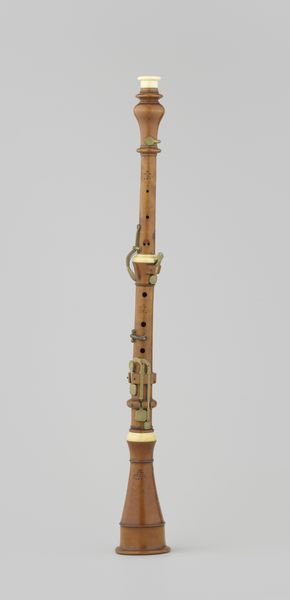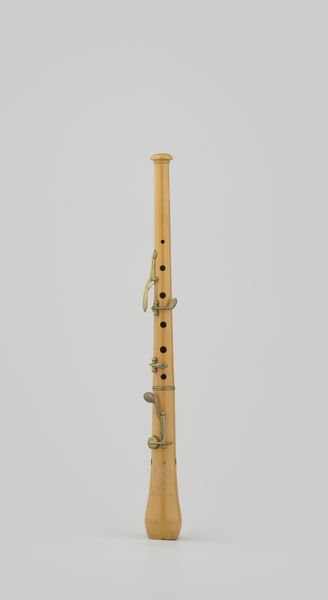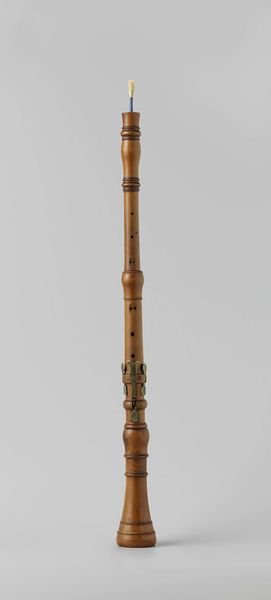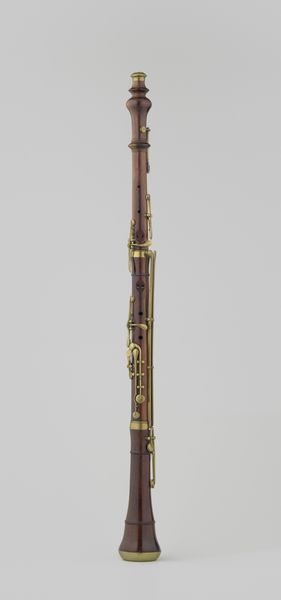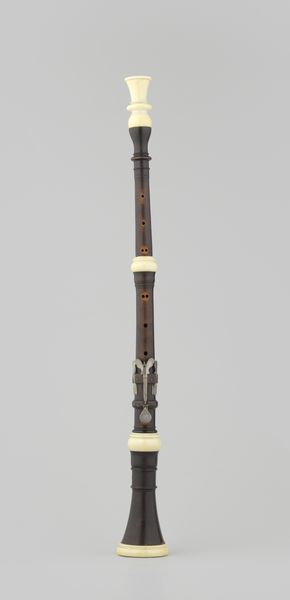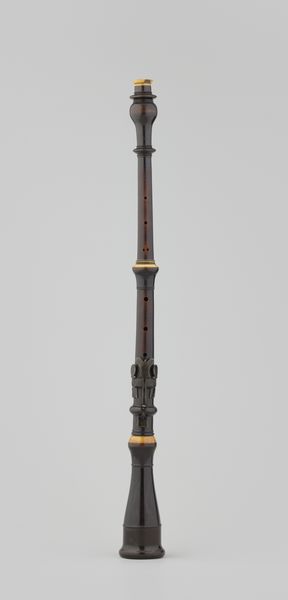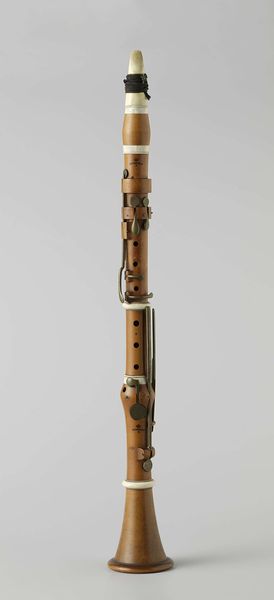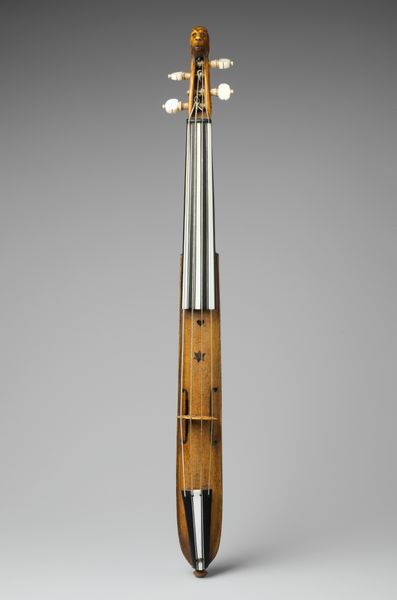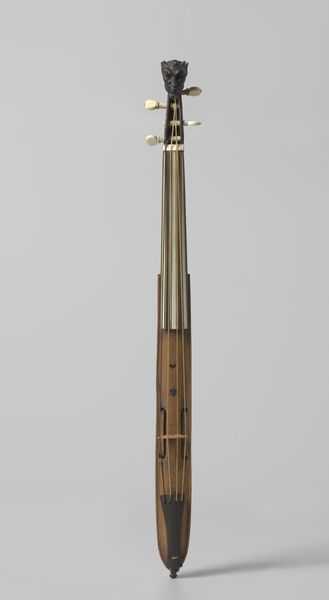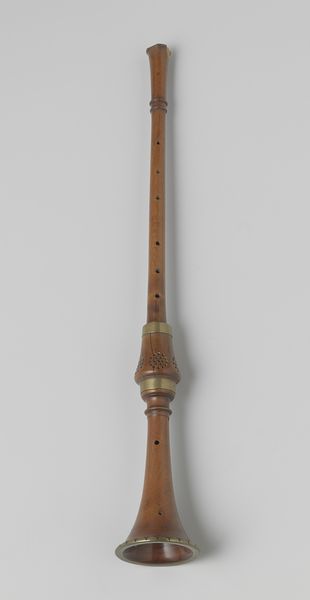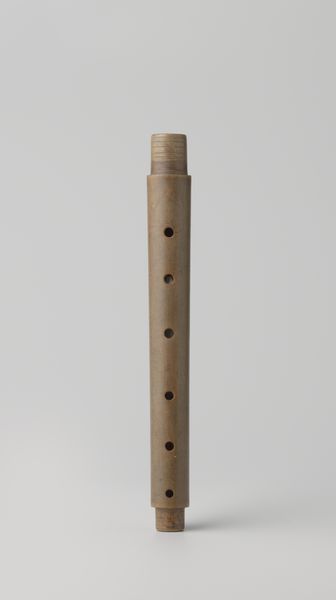
wood
#
baroque
#
wood
Dimensions: length 59 cm, diameter 5.6 cm, diameter 2.3 cm
Copyright: Rijks Museum: Open Domain
Curator: It feels...surprisingly elegant. There’s a real lightness to the form. Almost playful. Editor: This is an oboe from around 1750, made by Gilles Lot. The medium used is wood. Consider the precise craftsmanship required to turn a piece of raw material into this. Curator: Wood breathes differently then metal. I can almost hear the mellow tone it produces. Were these types of oboes difficult for their makers to source, turn and bore out into precise cylinders? Editor: That’s a key question. Skilled labor was certainly involved. Access to well-seasoned wood was crucial. Wood of that type isn't just lying around: sourcing it from a plantation or forest requires expertise and relationships. Curator: And then the embellishments. Look at the pale bands which almost gives it a decorative finish. I suppose such details would not only reflect aesthetic choices but also practical necessities of protecting the joints in such a delicate, crafted item. Editor: Exactly. Consumption is also vital. Music performance was transforming at the time, expanding beyond the church and nobility. Instruments needed to meet growing market demands. Were cheaper alternatives sought out as more players picked up such instruments? How did materials reflect function and accessibility? Curator: You make it feel very democratic... although owning an object this ornate still feels very class-conscious. When I think of the Baroque, I imagine palaces and candlelight—and the reedy call of the oboe in such spaces. Perhaps those ivory bands held a deeper glow. Editor: Perhaps indeed, these oboes may have held differing values according to both those who acquired and who had the privilege to use them. Considering Lot's wider body of work can further develop a better understanding of music accessibility. Curator: Reflecting on that accessibility gives this humble oboe a resonance beyond a mere instrument— it embodies its era. Editor: An era shaped by evolving modes of production and artistic appreciation. Very intriguing, very interesting.
Comments
No comments
Be the first to comment and join the conversation on the ultimate creative platform.
